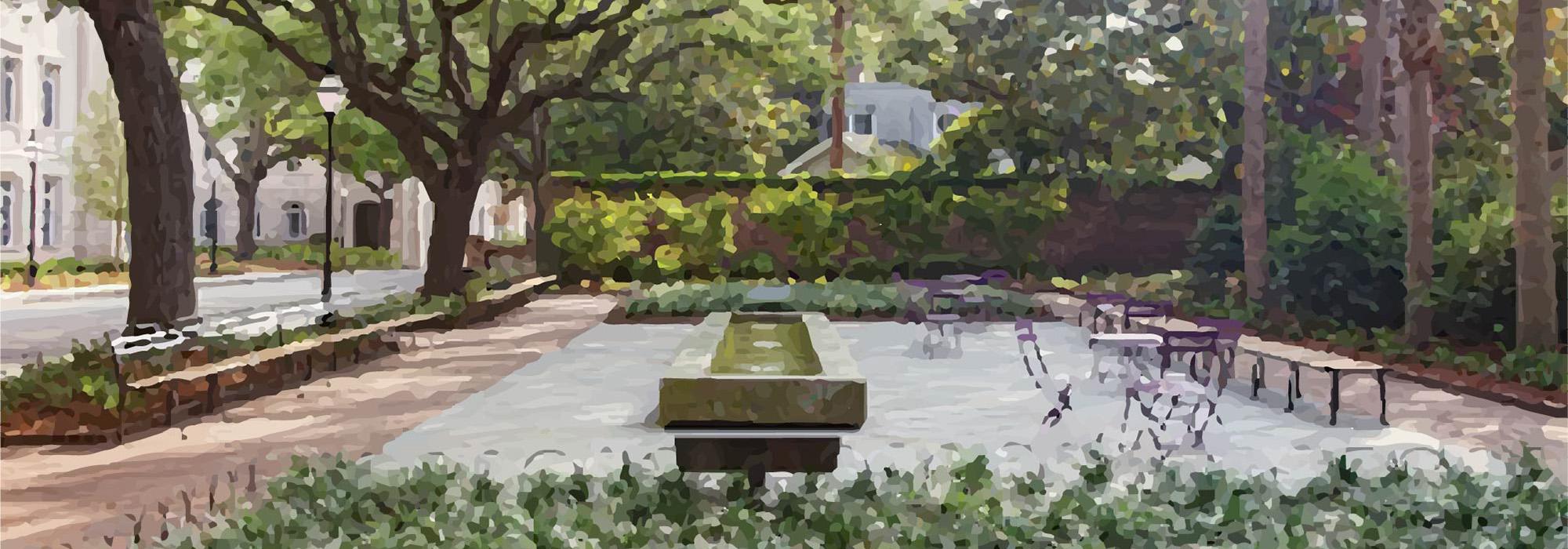It Takes One: David Rawle
During the past four decades I have lived in Charleston, South Carolina, where I founded a marketing and communications firm that served many national clients. I love the opportunity to make a difference, and I have been very fortunate to work on several initiatives that have helped make Charleston one of the nation’s most desirable places to live and work. I have always been interested in gardens and green spaces. Growing up in Connecticut, I spent a lot of time in the garden my mother created. My sister and I had a designated area in which we grew lettuce, radishes and carrots. I vividly remember that wonderfully distinct taste of pulling a carrot fresh from the earth, wiping off the excess dirt, and biting into it (that’s not ‘farm-to-table,” it’s “farm-to-mouth”).
Coming from Connecticut to Charleston, the gardens and parks seem especially luxurious to me, because the semi-tropical climate enables year-round beauty. Charleston’s private gardens have always been legendary, and recently there has been a resurgence of interest in expanding and improving public gardens and parks as well. Much of that is a result of Mayor Joe Riley’s passion for parks. During his tenure, there have been 94 new parks and 120 substantially improved ones—quite an accomplishment.
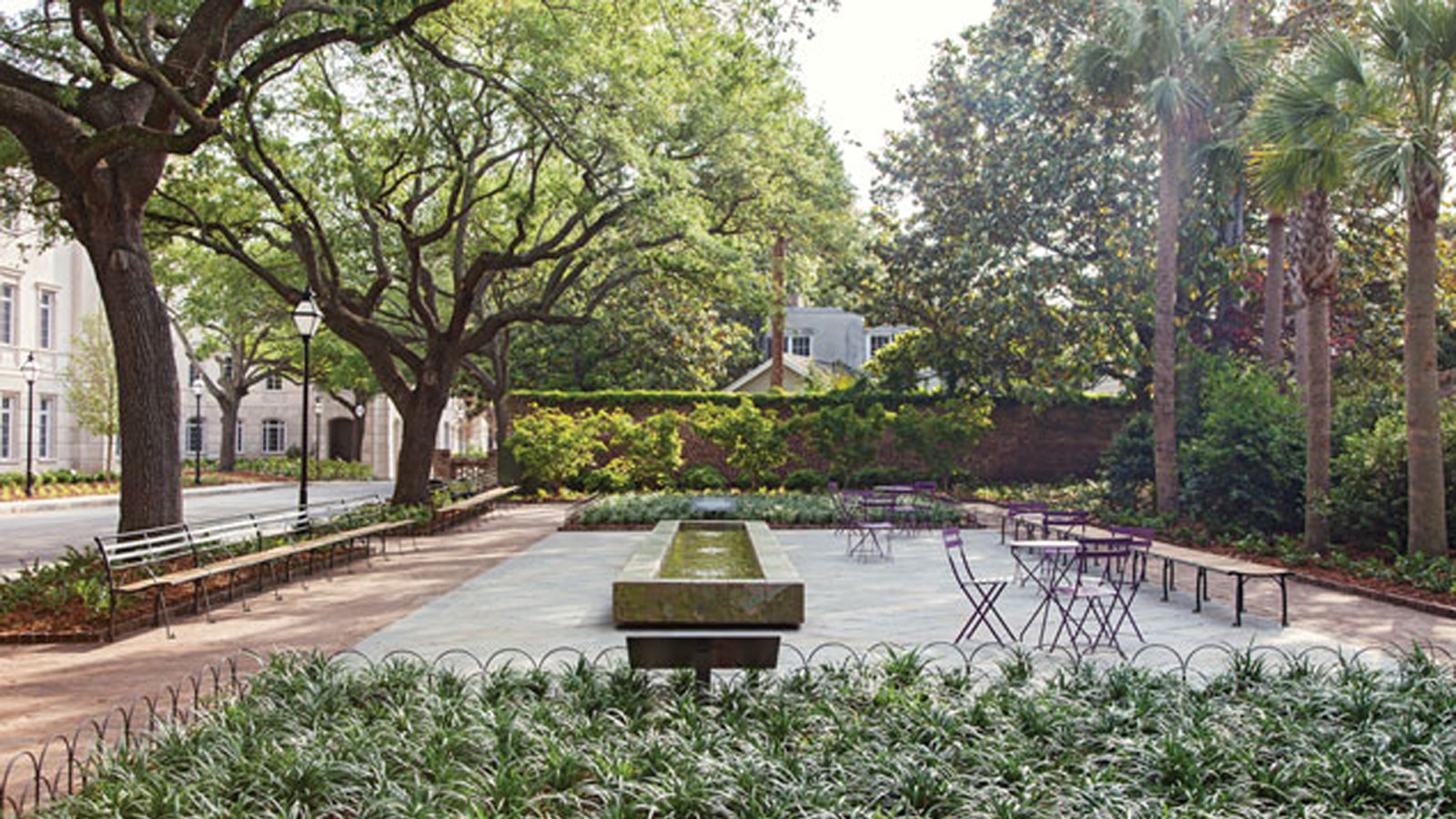
My role in Charleston’s ‘park renaissance’ has been singularly focused on the creation of Theodora Park, a strategically located pocket park, which honors my mother and combines nature with art. Through a wonderfully successful public-private collaboration, we have been able to enrich Charleston’s already abundant park spaces.
How would you define a cultural landscape?
In the case of Theodora Park, a cultural landscape is a space that has been consciously designed to provide people with a unique experience with nature and art.
Why did you get involved with Theodora Park?
For many years, I have lived a block away from what was a small run-down, hardly used park in the heart of historic Charleston. It was dark and mosquito-ridden, because enormous magnolia trees blocked all of the light and left the ground covered in mud.
I wanted to fix it up and make it a place of beauty and repose. I wanted to encourage others to preserve and enhance green spaces in their neighborhoods. And, importantly, I wanted to honor my mother, a gracious and caring person who loved nature and art.
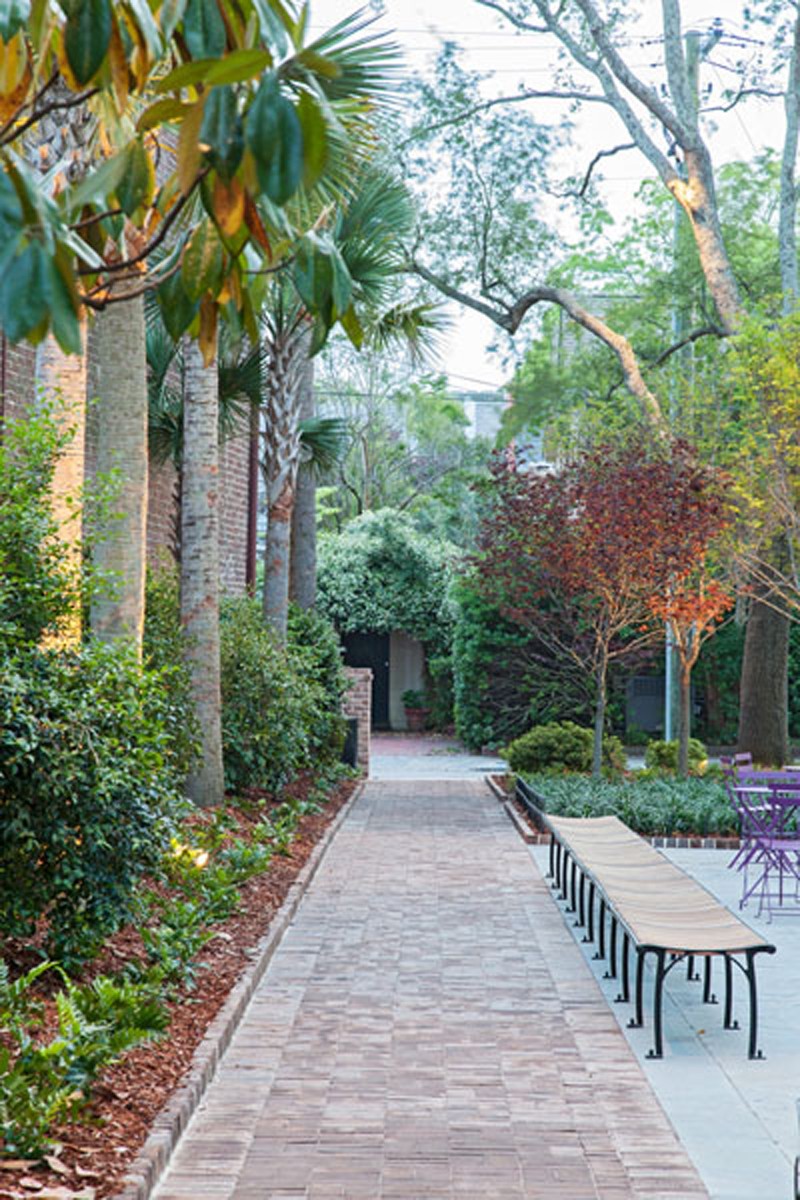
How did your understanding of this landscape change as a result of your advocacy efforts?
My understanding evolved, more than changed. As the project proceeded, I learned more about the plethora of challenges involved with even a seemingly simple design. There were basically three major decision points.
The first was the structure for the project: creating a public-private partnership that involved the City of Charleston, the Charleston Parks Conservancy, and generous private donors. I feel strongly that we cannot look solely to governments for adequate resources to create and maintain the highest-quality cultural landscapes. And so collaboration is essential.
Second, selecting the right landscape architect was a key decision point. I knew what a good designer Sheila Wertimer was. After all, she had completed more than 600 projects in the Charleston area. But she provided so much more. She knew how to navigate the municipal bureaucracy and work well with others. And that same sense of collaboration extended to her relationship with the artistic components in the park, which leads me to the third important decision point: the art.
I really wanted the park to include water, because my mother loved water and had several small ponds in her own garden. One of my good friends is the noted ceramic artist Paul Heroux, who lives in Maine. I asked Paul if he would design a fountain pool that would be entirely covered with unique handmade tiles, which he would create. He made the most radiant, breathtakingly beautiful tiles—each unique and each a treasure—that include references to lifeforms in nature. Paul and Sheila worked seamlessly as they integrated Paul’s pool with Sheila’s design.
And then I happened upon an exquisite wrought-iron gate, designed and made by Charleston’s legendary artist Philip Simmons, whose work is in two of the museums of the Smithsonian Institution. Theodora Park has no fence. We want it to be open and welcoming to all, so we decided to present the gate as what it is – a work of art. Sheila creatively accommodated that idea, once again making the art an integral part of the overall landscape.
My understanding of the Theodora Park landscape evolved further as I watched the implementation of the design: the complexity of selecting and laying the bricks, the challenge of installing slightly irregular handmade tiles, the intricacies of the pool’s mechanical equipment and the irrigation system, the subtleties of the lighting, and so much more.
I suppose I felt a little like saying, “If I’d known then what I know now….” But the truth is that I was so pleased with the result that I can hardly recall the hurdles.
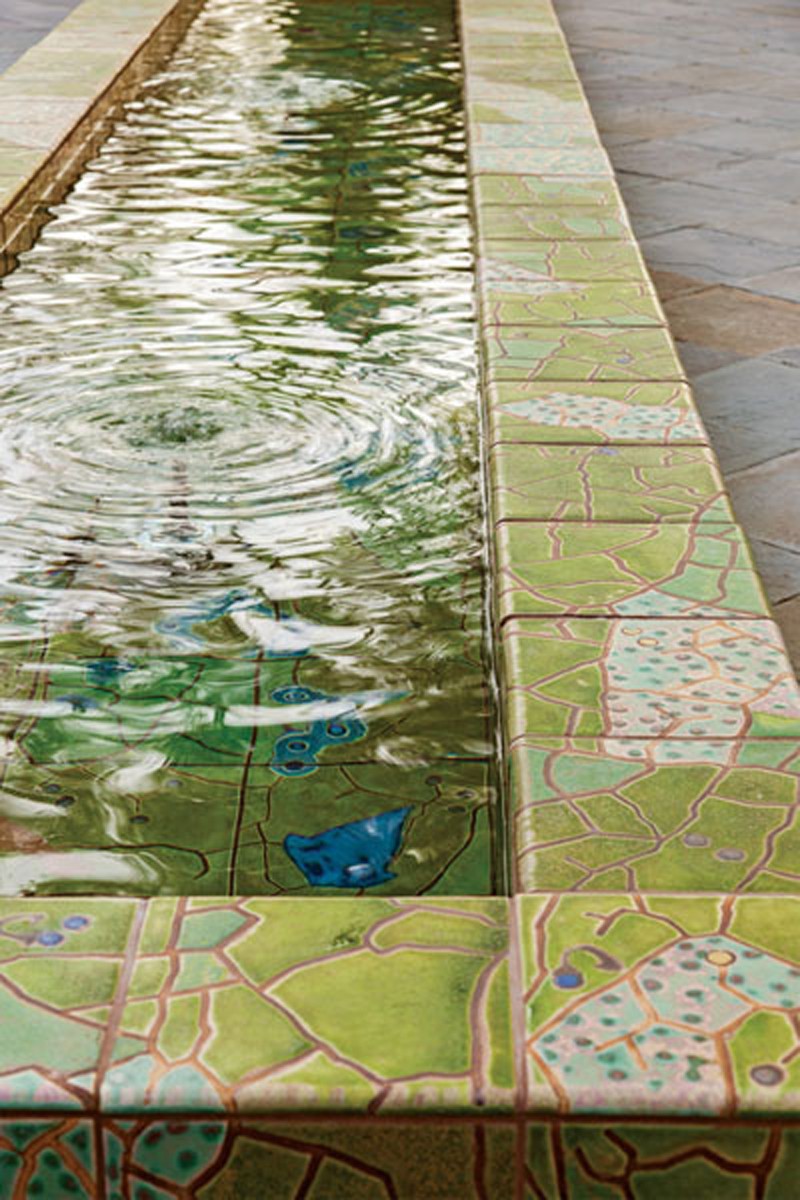
Did your understanding of other cultural landscapes change as well? If so, how?
When you are committed to raising the bar in quality, you are pushing everything to be as good as it can possibly be. You are never ‘settling.’ As a result, you become so much more respectful and appreciative of landscapes that do reach a level of excellence. You become more observant. You notice details. You consider more how something has been achieved. You become both a more critical and a more appreciative viewer.
In that regard, I think a lot about Paley Park in New York, as it had a major influence on my interest in creating Theodora Park. Paley Park was created almost 50 years ago, and yet it remains the gold standard of pocket parks. Simple and elegant, it offers a relaxing, peaceful respite in the midst of a bustling city. And it honors Mr. Paley’s father. Paley Park more than stands the test of scrutiny and the test of time. I can only hope as much for Theodora Park.
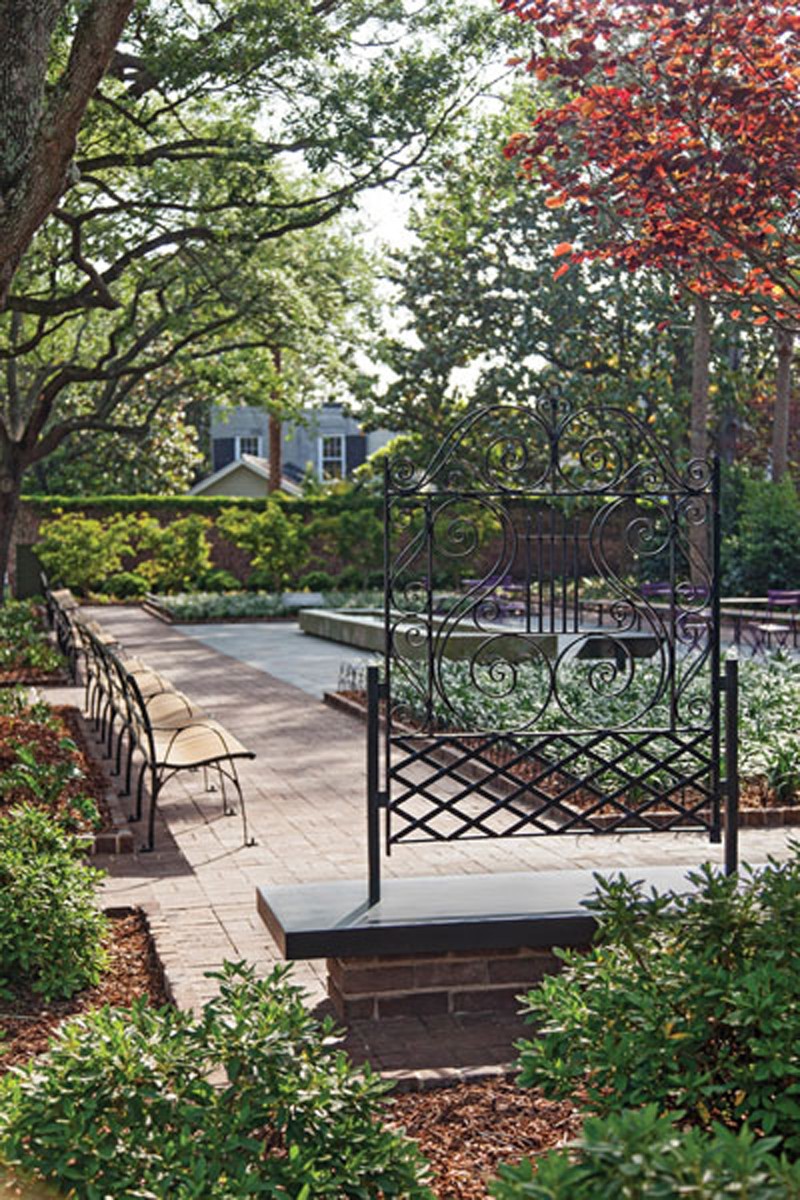
What is the message that you would like to give our readers that may inspire them to make a difference?
I thought I was giving something to Charleston. But the fact is, I got so much more in return. People were so generous with their time, talent and resources. I had such fun working with creative planners, artists, and craftsmen. I derived so much pleasure from seeing it all come to fruition. “The more you give, the more you get” is one of the most important truisms in life.
A few years ago, with only a dream of Theodora Park in my head, I visited Warrie Price at the Battery Conservancy. I told Warrie what I wanted to do. I had no plan, no structure, no team, and no money--only the dream. “You must do it!” said Warrie. She was so categorical. As I did proceed, whenever there was a stumbling block, I thought of Warrie’s command: “You must do it!” To other dreamers out there, I can only say, follow your heart…and listen to Warrie.



